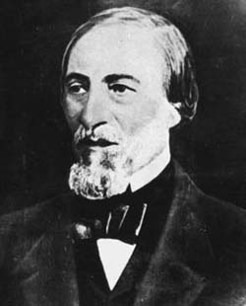Explorers
With the State’s earliest settlement established at King George’s Sound and the Swan River and the opening of an overland route between these points, the Great Southern was one of the first parts of the State to be explored by the British.
CAPTAIN THOMAS BANNISTER
Thomas Bannister (1799–1874) was a soldier and explorer in Western Australia. He was born in Steyning, Sussex in 1799, and arrived in Western Australia in 1829, age 30, with the rank of Captain aboard the Atwick with three servants from London, England.
Upon arriving in Fremantle he accompanied Thomas Braidwood Wilson to select land for settlement along the Canning River.
It is recorded that Captain Bannister, early in 1831, made the first expedition overland from Perth to King George Sound, his route being via York and Williams, the town of Albany, as such, being proclaimed on his arrival at the southern port.
His report of the country south of Williams was not favourable, the chief aim of explorers in those early days, and for many years afterwards, being to locate open, well-grassed and naturally watered areas suitable for the depasturing of stock. It was this aspect of settlement that accounted for the apparent neglect for many years of the more heavily timbered areas of the Great Southern.
Leaving the colony in 1835 (renting his Canning land to William Nairn[3]), and went to Victoria where he became a founding member of the Port Philip Association.[4] He is the brother of Saxe Bannister, the first Attorney General of New South Wales.
Thomas Bannister died in 1874. The Bannister River, the town of North Bannister, and Bannister Street, Fremantle, are all named after him.
SIR RICHARD SPENCER
It was in 1834 that Sir Richard Spencer, Government Resident at Albany from 1834 until his death in 1839, obtained 292 sheep from Tasmania. This flock was at first depastured in the vicinity of Albany, but in the year following, 1835, was moved to a property on the Hay River, which Sir Richard had acquired from the Crown.
At this period, the whole of the country in the vicinity of Albany and extending as far north as Eticup (Broomehill) was part of the Plantagenet district, the Williams district, later being declared by Surveyor Hillman, in 1835, when he traversed and marked the Hotham and Williams rivers.
From Australian Dictionary of Biography:
Sir Richard Spencer (1779-1839), naval officer and settler, was born on 9 December 1779, the only son of Richard Spencer, a London merchant. At 14 he entered the navy as a midshipman, serving in Channel patrols and later on North American and West Indian Stations. Transferred to the Mediterranean at 21, he was promoted lieutenant in the captured French Guillaume Tell. In the brig Camelion he commanded a unit of a gunboat patrol for some years, once guarding a flank of the British army at Aboukir Bay. Continue reading
JOHN SEPTIMUS ROE

In 1835, John Septimus Roe mounted an expedition south of the Swan River Colony and traversed vast areas, including what is now Katanning and Gnowangerup, naming the Stirling Range, and through the Cranbrook area to Albany.
Following Roe’s reports, settlers realised the potential of the region. In 1847 the government introduced a system of grazing land leases to regulate the squatters who pastured their flocks on Crown land.
In 1848, Surveyor-General Roe starting from York, explored the country southward to Cape Riche, his route being to the eastward of the present Great Southern railway. Reaching the coast, he turned eastwards, traversing and naming the Pallinup, Gardiner, Fitzgerald and Phillips Rivers. He located large areas of sandalwood on this expedition, and this discovery hastened the opening up of the Great Southern.
It was in this year, 1848, that the survey of the Perth-Albany Road was completed, although the actual clearing of the surveyed line was not commenced until 1850. The history of the Perth-Albany Road may be said to have commenced when Captain Bannister, in 1831, set out from York to mark a route, to King George Sound.
In 1836, Surveyor Hillman marked a road from Albany to Mt. Barker, this survey including an extension to Lake Matilda. In July 1837, a track was cleared from Albany to York, via Williams, and military posts were established along its length to protect travellers from natives.
In 1838, the year that Captain John Hassell acquired Kendenup, it is recorded that four bridges were constructed on this length of road by John Young, and in 1841 a monthly mail was established between Albany and York. In the same year a more direct route from Williams to Perth was opened up, and a military post established at the Bannister, named after Captain Bannister, who had first marked the route.
From Australian Dictionary of Biography:
John Septimus Roe (1797-1878), naval officer, surveyor and explorer, was born on 8 May 1797 at Newbury, Berkshire, England, the seventh son of Rev. James Roe, rector of Newbury, and his wife Sophia, née Brookes. His boyhood wish to become a teacher was frustrated by lack of money for his education, but his father secured for him a place at Christ’s Hospital, London, where he became a pupil of the mathematical school. At school Roe formed the habit of writing to his parents lengthy letters about his doings and his thoughts and he continued to be a devoted diarist throughout his life. The earliest letters show the struggle his parents had to keep him at school and the boy’s determination not to fail them. Continue reading
Explorers. Explorers. Explorers. Explorers. Explorers.
